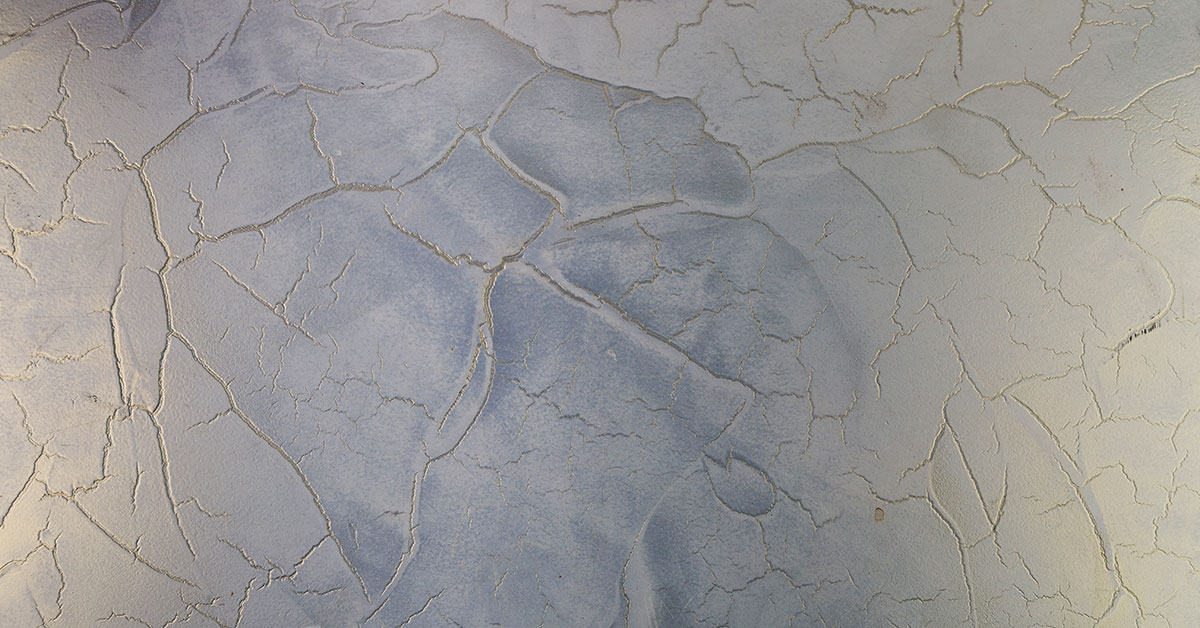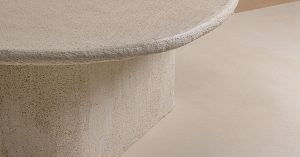Did you know that nearly 80% of homeowners encounter significant challenges with microcement surfaces, particularly when it comes to unsightly cracks and persistent fissures that can compromise both aesthetics and structural integrity? Understanding the intricate science behind microcement application becomes absolutely essential for achieving a flawless and durable finish that stands the test of time. Whether you’re embarking on an ambitious kitchen renovation or transforming a luxurious bathroom space, microcement offers the potential to beautifully transform your environment with its seamless, modern appeal.
However, this innovative coating comes with its own unique set of challenges that require careful consideration and expert knowledge. Recognizing the common causes of microcement cracking proves vital for maintaining pristine surfaces that retain their beauty and functionality for years to come. With the right preventive measures and professional guidance, you can successfully keep your surfaces intact while maximizing the longevity of your investment. This comprehensive guide will share invaluable expert tips to avoid common microcement problems and ensure exceptional results that resist cracking.
Key Takeaways
- Understanding the prevalence of issues with microcement surfaces.
- The importance of expert tips for preventing cracks and fissures.
- Essential steps for preparing and applying microcement.
- How to choose the right products for effective results.
- Identifying professional applicators to ensure a seamless finish.
Table of Contents
Understanding Microcement and Its Popularity
Microcement has emerged as a top choice for modern renovation projects, perfectly combining aesthetic beauty with practical functionality that appeals to discerning homeowners and professional designers alike. Its unique properties and versatility make it an increasingly popular solution for contemporary living spaces where ease of maintenance is paramount.
What is Microcement?
Microcement represents a revolutionary thin-layer decorative coating composed of carefully balanced cement, fine aggregates, and specialized pigments that work together to create exceptional performance characteristics. This innovative material is expertly applied over existing floors, walls, and various surfaces like tiles using specialized techniques that result in a sleek, ultra-modern appearance suitable for diverse architectural applications.
The sophisticated application process creates an incredibly smooth, continuous finish that eliminates the need for traditional joints or grout lines commonly associated with conventional tile installations, resulting in a truly uninterrupted surface that enhances spatial flow and visual continuity without expansion joints.
Benefits of Using Microcement in Home Renovations
Microcement offers exceptional durability and remarkable resistance to heavy foot traffic, making it an ideal choice for high-use areas throughout the home. Its inherently waterproof properties make it particularly well-suited for wet areas such as bathrooms, kitchens, and even swimming pools, where moisture resistance is absolutely critical for long-term performance and where microcement remains stable despite constant exposure to moisture.
The material offers virtually unlimited design possibilities, effortlessly fitting various architectural styles while adding a distinctly modern, sophisticated touch that enhances property value and aesthetic appeal through its remarkable versatility.
Key Characteristics of Microcement
Microcement is one of the most versatile materials renowned for its completely seamless finish and remarkably low maintenance requirements that make it an attractive option for busy homeowners. The material demonstrates exceptional adaptability by adhering effectively to numerous existing surfaces, including concrete, ceramic tile, wood, and metal substrates, making it incredibly valuable for diverse renovation projects where microcement is used over existing materials.
Additionally, microcement is available in an extensive palette of colors and textures, allowing homeowners to create truly personalized spaces that reflect their unique style preferences while enjoying all the practical benefits this innovative material provides.
Common Causes of Microcement Cracking
Cracks in microcement can present significant problems that affect both appearance and structural integrity, often resulting from a combination of structural movements, inadequate substrate preparation, and critical mistakes during the application of microcement. Understanding each of these contributing factors becomes essential for preventing costly repairs and maintaining surface quality, as various factors can contribute to potential problems.
Structural Movements and Their Impact
Structural movements occur naturally when buildings experience settling, thermal expansion, or foundation shifts that create stress on applied surface materials. These inevitable movements can cause microcement crack development if the material isn’t properly bonded to its underlying base or if the substrate lacks sufficient stability to accommodate these natural building movements, particularly when due to temperature fluctuations.
Conducting thorough structural assessments before applying the microcement can significantly reduce the likelihood of movement-related cracking, ensuring that the surface remains strong and crack-free throughout its service life, especially when ambient temperature conditions are properly controlled.
Poor Preparation of Substrates
Proper surface preparation represents the cornerstone of successful microcement installation, as inadequate preparation directly leads to adhesion failures and subsequent cracking problems. When the underlying substrate isn’t properly cleaned, primed, or stabilized, the microcement cannot establish the strong mechanical bond necessary for long-term performance, leading to substrate issues that manifest as surface defects.
Investing adequate time and resources in meticulous surface preparation dramatically reduces the probability of future problems may arise, creating a solid foundation that supports the microcement system throughout its intended lifespan.
Application Errors That Lead to Issues
Mixing inconsistencies or incorrect layering techniques frequently result in structural weaknesses that manifest as cracks over time. When the microcement mixture isn’t prepared according to manufacturer specifications, or when improper application techniques are employed, the resulting surface may lack the structural integrity required for demanding service conditions, often resulting in defects and misapplication.
Following strict application guidelines and utilizing experienced professional applicators helps avoid these common mistakes, ensuring that the microcement system performs as designed throughout its service life and that the material is applied correctly.
| Cause | Description | Preventive Measures |
| Structural Movements | Foundation shifts and thermal expansion creating surface stress | Monitor building movements and design flexible installation systems |
| Poor Preparation | Inadequate surface cleaning and priming causing adhesion failure | Ensure thorough substrate assessment and preparation |
| Application Errors | Incorrect mixing ratios and layering techniques creating weaknesses | Follow manufacturer guidelines and use certified applicators |
Microcement Cracking: How to Prevent Fissures
Preventing microcement cracking requires focused attention on three critical areas that work synergistically to ensure long-term performance: comprehensive surface preparation, selection of appropriate materials, and engagement of qualified professional applicators. Each element plays an indispensable role in creating a lasting microcement installation that can resist cracking and maintains its aesthetic appeal, particularly when microcement application requires careful attention to detail.
Importance of Proper Surface Preparation
Comprehensive surface preparation forms the absolute foundation of any successful microcement application, requiring meticulous attention to detail and adherence to established protocols. The underlying surface must be thoroughly cleaned, completely dry, and structurally stable before any microcement application begins, which includes removing all existing finishes, repairing structural defects, and verifying substrate stability to prevent future instability.
Investing substantial time and effort in proper preparation work dramatically enhances adhesion properties and overall system durability, helping ensure that your microcement installation withstands daily use and environmental stresses for many years to come while preventing appearance of cracks.
Choosing the Right Products for Application
Selecting premium microcement systems and compatible sealers provides superior flexibility and enhanced adhesion characteristics that prove essential for accommodating slight structural movements without developing stress cracks. High-performance microcement coatings demonstrate superior resistance to thermal cycling, moisture penetration, and mechanical stress that can compromise inferior systems, ensuring that microcement has become a reliable choice for demanding applications.
Ensuring product compatibility across all microcement system components becomes crucial for optimal performance and longevity, as mismatched materials can create weak points that lead to premature failure and costly repairs.
Hiring Professional Applicators
Engaging skilled, experienced applicators proves absolutely critical for preventing cracking issues, as these professionals possess the technical knowledge and practical experience necessary to handle varying temperature changes and humidity conditions that significantly impact installation success. Their expertise enables them to select optimal application techniques for each specific substrate and environmental condition, ensuring materials are installed and maintained properly.
Professional applicators ensure proper mixing ratios, appropriate layer thickness, and correct cure procedures that result in a smooth, flawless finish with maximum durability and crack resistance, particularly important when working in challenging environments like bathrooms or outdoor spaces.
| Aspect | Impact on Cracking | Importance Level |
| Proper Surface Preparation | Dramatically reduces adhesion-related failures | Essential for long-term durability |
| Premium Microcement Selection | Enhances flexibility and structural adaptability | Critical for stress accommodation |
| Professional Application | Minimizes technique-related errors and defects | Fundamental for quality assurance |
Key Steps in the Application of Microcement
Successful microcement application demands careful attention to several critical steps that work together to create a durable, attractive finish. Understanding proper priming techniques, layering methods, and environmental controls becomes essential for achieving professional-quality results that resist cracking and maintain their appearance over time, especially when working within optimal temperature ranges of 15ºc and 25ºc.
Priming and Layering Techniques
The microcement application process begins with establishing a superior foundation through proper prime procedures that enhance substrate adhesion and create optimal conditions for subsequent layers. A professionally executed priming layer significantly improves the microcement’s ability to bond with the underlying surface, substantially reducing the likelihood of adhesion-related cracking while promoting surface uniformity across the entire surface.
Implementing correct layering techniques requires careful attention to layer thickness, drying times, and surface preparation between coats. Each individual layer must be applied evenly using appropriate tools and techniques, allowing complete curing before applying subsequent layers to maintain structural integrity and prevent stress concentrations that may crack the surface.
Control of Temperature and Humidity
Temperature changes and humidity control represent absolutely critical factors during the microcement curing process, as these environmental conditions directly influence the material’s ability to achieve proper strength development and crack resistance. Maintaining optimal ambient temperature conditions between 60°F and 85°F while controlling relative humidity between 30% and 70% ensures proper curing chemistry and prevents stress-related defects.
Excessive humidity significantly extends curing times and can lead to incomplete strength development, while insufficient humidity causes rapid moisture loss that results in shrinkage cracking and surface defects that compromise both appearance and performance, particularly when microcement is applied in challenging environmental conditions.
| Environmental Condition | Optimal Range | Impact of Deviations |
| Temperature | 60°F – 85°F (15ºc and 25ºc) | Low temperatures slow cure; high temperatures cause rapid drying and potential cracking |
| Humidity | 30% – 70% | High humidity extends curing time; low humidity leads to shrinkage and surface defects |
| Air Movement | Minimal drafts | Excessive air movement accelerates moisture loss and increases cracking risk |
Repairing Existing Cracks in Microcement
Microcement surfaces may develop cracks due to various factors including substrate movement, environmental stress, or application defects, making it essential to address these issues promptly to maintain both aesthetic appeal and structural integrity. Understanding proper repair techniques and identifying underlying causes ensures that repairs provide long-lasting solutions rather than temporary fixes, particularly when dealing with small cracks that can evolve into larger problems.
Identifying the Causes of Cracking
Determining the root causes of cracking represents the crucial first step in developing effective repair strategies that address underlying problems rather than merely treating surface symptoms. Common microcement problems include substrate movement, inadequate installation practices, environmental stress, and material defects that require different repair approaches for optimal results, as cracks in microcement can occur due to multiple contributing factors.
Regular surface inspections can identify developing problems before they become major issues, allowing for proactive maintenance that prevents extensive damage and reduces overall repair costs while ensuring the microcement surface maintains its integrity.
Effective Repair Methods for Small and Large Cracks
Small cracks can often be successfully repaired using flexible fillers or specialized epoxy resins specifically formulated for microcement projects, providing materials that accommodate slight movement while maintaining surface continuity. These repair products offer the flexibility needed to prevent crack reopening while blending seamlessly with existing surfaces, helping to protect the surface from further deterioration.
Larger structural fissures in microcement typically require more comprehensive repair approaches, including reinforcement mesh and multiple epoxy applications to restore structural integrity and ensure long-term performance. The specific repair method selection depends on crack size, location, and underlying causes, with regular care of microcement helping preserve the surface’s appearance and extending its service life.
Discover the Crack-Resistant Alternative: Why Terrazzo GraniTech Revolutionizes Surface Applications
While traditional microcement offers numerous benefits for modern renovations, the persistent challenge of cracking has driven innovative companies to develop superior alternatives that eliminate these common microcement problems entirely. Terrazzo GraniTech represents a revolutionary breakthrough in decorative surface technology, offering a patented acrylic resin-based plaster system that fundamentally addresses the limitations of conventional cement-based materials through advanced engineering and superior material science, ensuring that microcement crack easily issues become obsolete.
Unlike traditional microcement that relies on cement-based chemistry prone to shrinkage and thermal movement, Terrazzo GraniTech utilizes a sophisticated acrylic resin matrix that provides exceptional flexibility and durability while maintaining the seamless aesthetic that makes microcement so appealing. This innovative formulation incorporates anti-crack memory resin technology that actively accommodates structural movements and thermal cycling without developing the stress fractures that plague conventional cement-based systems, effectively eliminating scenarios where microcement may fail under stress.
The superior performance characteristics of Terrazzo GraniTech become immediately apparent when comparing real-world applications, as installations consistently demonstrate crack-free performance even in challenging environments such as swimming pools, exterior terraces, and high-traffic commercial spaces where traditional microcement frequently fails. Professional contractors report elimination of callback services and warranty claims, allowing them to focus on business growth rather than costly repair work that erodes profitability and damages professional reputation, particularly important when problems may arise with conventional systems.
From a practical application standpoint, Terrazzo GraniTech offers significant advantages over traditional microcement systems, including the ability to apply directly over existing surfaces without demolition requirements, eliminating permit delays and substantially reducing project costs. The material’s inherent crack resistance means that extensive surface preparation requirements associated with microcement become unnecessary, as the flexible resin matrix accommodates minor substrate imperfections and movements that would cause conventional systems to fail, ensuring materials remain installed and maintained with minimal effort.
The environmental benefits of choosing Terrazzo GraniTech extend beyond performance characteristics, as the no-demolition application process eliminates construction waste while reducing project timelines and associated environmental impacts. The material’s exceptional longevity means fewer replacement cycles, contributing to sustainable building practices while providing superior return on investment for property owners who demand ready-to-use microcement alternatives that perform reliably.
Professional applicators consistently praise Terrazzo GraniTech’s user-friendly characteristics and forgiving application properties that reduce the technical expertise required for successful installation compared to traditional microcement solutions. The material’s extended working time and superior adhesion properties make it accessible to a broader range of contractors while maintaining professional-quality results that satisfy the most demanding clients, particularly in challenging applications like kitchens and wet areas.
Testing data demonstrates that Terrazzo GraniTech maintains structural integrity and aesthetic appeal under conditions that cause traditional microcement to develop fissures and require costly repairs. Independent laboratory testing confirms the material’s superior resistance to thermal cycling, moisture penetration, and mechanical stress, providing quantifiable evidence of its performance advantages over conventional alternatives, ensuring that several factors that typically cause failure are effectively managed.
The investment in Terrazzo GraniTech technology represents not merely a material upgrade, but a fundamental shift toward next-generation surface solutions that eliminate the chronic problems associated with traditional microcement applications. Property owners, contractors, and designers who choose this innovative system benefit from superior performance, reduced maintenance requirements, and elimination of crack-related problems that have historically plagued cement-based decorative coating systems, making it the definitive solution for discerning professionals who demand excellence in both performance and aesthetics while ensuring that pigmentation remains stable and stain-resistant throughout the material’s service life.










